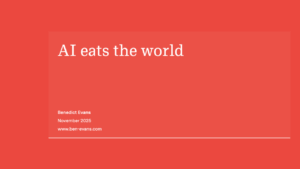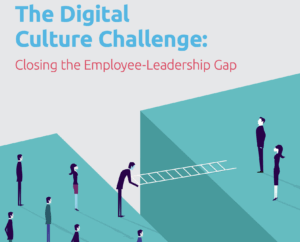Customer-centricity or getting closer to customers is often the focus of many executive meetings I attend these days. The question always arises, “how can we use new media to get closer to customers?”
The answer is not, develop a social media strategy to start engaging with customers. The answer is, change. Any organization that focuses on operations, margins, and efficiencies over customer experiences will find itself unfavored by tomorrow’s connected customer. It’s difficult to see the customer or empathize with them if you’re focused on a spreadsheet. It’s impossible to change if you can’t see what it is they value.
Social media is as rewarding as it is complex. For businesses seeking to engage customers in the social web, lucidity is the key to relevance. However, social media is not static nor is it constant in any one state. It’s part of the new media revolution and it’s driving the new information economy.
Its importance lies in maturation and the stages we experience as we experiment and learn. As we dive deeper into understanding its potential, we uncover new opportunities to create not only a social business, but an adaptive business. Social media’s true promise lies in its ability to reveal human behavior, emotions, and experiences to inspire brand empathy. While we talk of humanizing our brand and our business or becoming a more consumer-facing brand, the reality is that we are merely at the beginning of an important shift in business philosophy. Customer-centricity begins with internal transformation and the willingness to adapt or create processes and programs that break down internal silos. It’s not just about communicating with customers; it’s about showing them that listening translates into action within the organization to create better products and services and also foster valuable brand experiences and ultimately relationships with customers. It’s also about empowering employees to improve those experiences and relationships in the front line and to recognize and reward their ability to contribute to a new era of customer engagement and collaboration. They have to care, not just because they’re human, but because it’s part of the corporate culture…and a recognized contribution at that.
Innovation and collaboration is an outside-in and an inside-out process. It is living. The activity we tap into in networks inhabited by connected customers forces a groundswell that inspires top-down transformation from the bottom-up.
It’s time to take new media to the next critical phase, the need to understand the needs of the market and deliver against them. The adaptive business will plug into the human seismograph to listen, innovate, and co-create. To do so, engagement, customer recognition and empowerment and investment in empathy become the pillars for an external mission. Creating a culture of change for employees, customers, and partners and equally investing in movement of adaptation, innovation, and co-creation become the pillars for internal transformation. This is just the beginning of how we create a more customer-centric organization and how new media plays a role in engagement and learning to foster change and relevance.
The future of business isn’t created, it’s co-created.
Connect with Brian Solis on Twitter, LinkedIn, Facebook
![]()
___
The New ENGAGE!: If you’re looking to FIND answers in social media and not short cuts, consider either the Deluxe or Paperback edition

___
Get The Conversation Prism:

___
Image Credit: Shutterstock






I agree, just argued this case recently in my blog and you need to focus on seeing the customer as a part of your development… open source
Right Hans. Keep up the good work. It takes a sea of people to bring a sea of change.
Great stuff Brian, it’s good to have these pieces out there to get people thinking in the right way!
To be customer centric you have to start by putting people first. It won’t work otherwise. By people I mean customers, prospects, employees, your businesses neighbours etc etc. So many companies are being sold customer centric (or social business) as a model but it’s all about profit still. People first, and being honest/authentic, profitability will follow as long as your product/offering actually warrants it…
Steve, yes! Agreed! People = the 5th P http://www.flickr.com/photos/briansolis/5585660309/
How funny! I consult to ecommerce companies in many sectors and often tell them when we’re discussing merchandising or conversion that the best Promotion puts the right Product, in front of the right People, at the right Place in their ecommerce process at the right Price!
It’s funny. I was just getting looks from teammates in a meeting this morning when I countered yet another mention of “business needs” with “people ARE the business.” Every time I hear “decision makers,” I want to correct the term to “overhead,” because the people actually DOING the work, actually ENGAGING with the customer/public, are the real value of any organization.
Metaphor Time: People are the engine, the transmission, the suspension, the brakes – pretty much every part of the car. Management, on the other hand, is the steering wheel. And, today, the people are designing cars that can steer and park themselves. Funny, that.
Working in the medical industry I’ve seen a huge change in attitude in the last 6-9 months in provider/business/patient attitudes toward change. It seems as though we are reaching a tipping point where the pain of not changing is surpassing the fear of taking a risk. By January 2012 the world will be a different place! Great stuff Brian. Thanks!
Brian:
I love what you are saying, and I couldn’t agree more.
The convergence of social media, the millennial mindset (their drive for social good, transparency and work/life integration) and cloud computing is transforming the workplace.
I was asked by a venture capitalist if the social media and cloud computing can actually automate good management practices and the answer is in part, yes. But they also demand behaviors that treat people as creative contributors by enabling them to innovate in the context.
In my book coming out this fall, BUSINESS AT THE SPEED OF NOW (with some fine contributions from you — thank you!), I start the book with a tale of brilliant customer service in a the future world where all these forces are in play. It’s all coming and not only do these forces enable good management, but they pull double duty by demanding it.
Keep up the good fight, Brian. I believe the power of social media to redefine how we manage complex organization in these fast times is just beginning to be understood — in no small part, because of you.
John
Hi Brian,
There is a problem here though…. Change for the sake of change can be counter-productive.
Sony is a good example of this.
If they’d stuck to the knitting and stayed out of the Entertainment industry, for example, they may have maintained their position.
Now, there losing share everywhere and are no longer the deluxe brand of the past.
Proceed with caution, no?
Ivan
You are often a man of understatement, Brian.
Your brief mention, “The answer is, change,” is a volume to me. I help Fortune 500 and government entities with their interactive and social marketing. What you say is true; if it’s not in their core DNA to embrace social, become transparent, etc., nothing more will happen apart from said companies having mediocre digital profiles with lacklustre experiences for their customers.
Cultural change is slow, and giving them a Facebook page won’t force it on them. It will only give them talking points to appear as if they get it.
In my experience, this desire to be “close” to the customer really has to be in the company’s DNA – and if it is not, no amount of social media juice will change that. You can’t change a tiger’s spots. And IMHO companies who don’t “have it in them” can’t just learn it on the go unless there are significant changes at the very top. Because this customer advocacy always flows from the top-down.
Just my 2 cents based on 20 years of observation 🙂
Hi Brian, great article. At the end, could there have been a typo “adaption” instead of “adaptation,” in: “Creating a culture of change for employees, customers, and partners and equally investing in movement of adaption, innovation, and co-creation become the pillars for internal transformation.” Great read! Thank you.